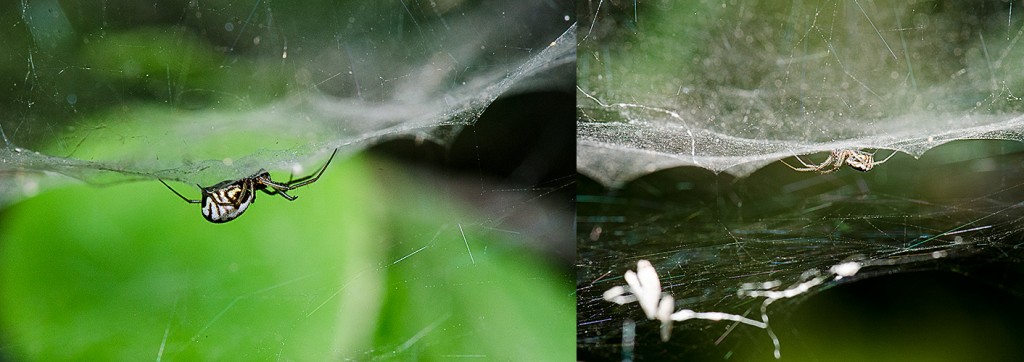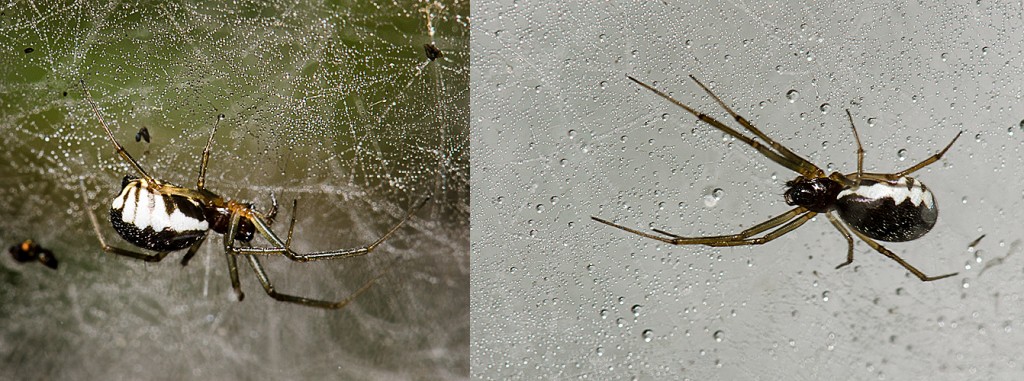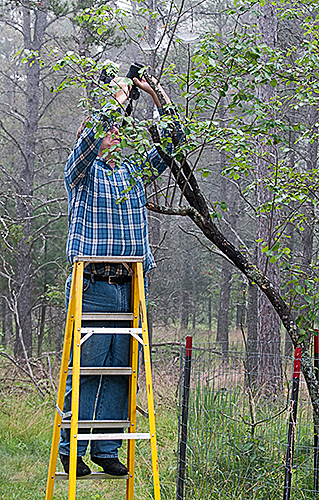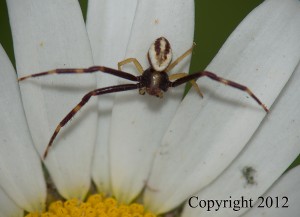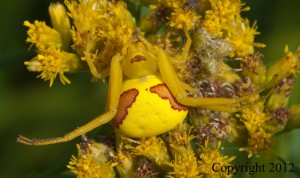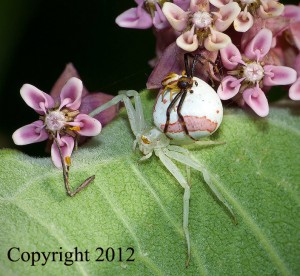I often see the webs of Bowl and Doily Weavers (Frontinella communis) in the shrubs surrounding our cabin near Grayling, Michigan. This spider is also called by the later name of Frontinella pyramitela.
On dewy mornings in late summer and fall the small webs sparkle in the sunlight. A large web is 150mm (6 inches) across and our field can have 50-100 webs. As the common name states the web looks as if it is a woven doily stretched under a bowl. It is one of the most distinctive webs in the Great Lakes Region. The bowl portion of the web collects debris, leaves, twigs, and dust and lasts several weeks. It is repaired but not replaced. The spider hangs from the underside of the bowl. Trip lines span the supporting twigs over the bowl and always look fresh. Insects fly into those lines and then drop onto the sticky bowl. After the spider retrieves its prey it sits on the doily portion to eat.
After years of seeing these webs I recently found the spider that spins them. It is only 3 or 4mm (3/16 inch) long. The females are slightly larger than the males. This species’ white markings on the abdomen are distinctive. Male and female spiders sometimes share the same web.
I spied a spider on a web about 3m (10 feet) off the ground. After photographing the web I climbed a stepladder to photograph the spider. I normally work with a camera mounted to a tripod and stand on firm ground. I managed to get a few photos and not fall off my perch.
Copyright 2014 by Donald Drife
Webpage Michigan Nature Guy
Follow MichiganNatureGuy on Facebook


